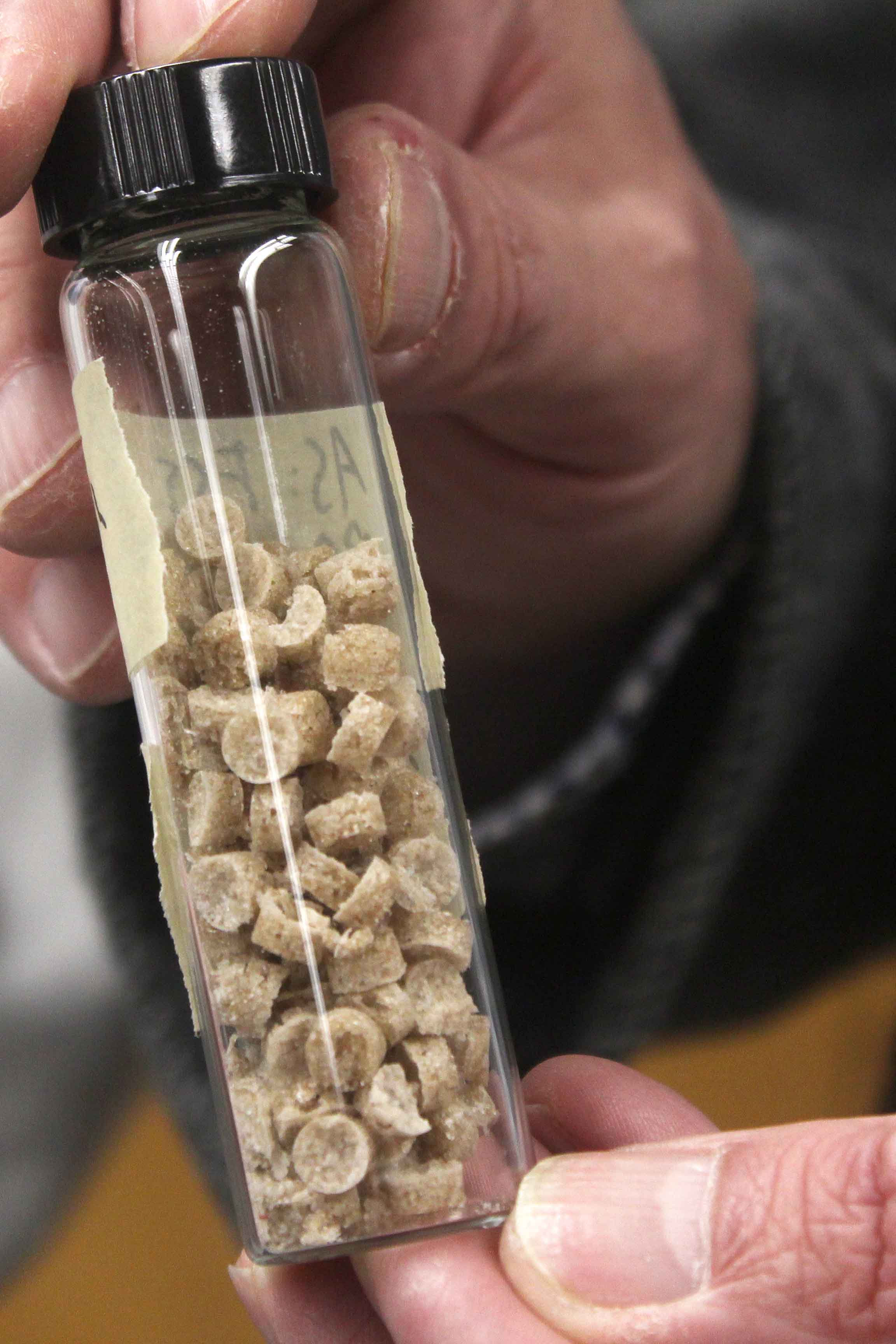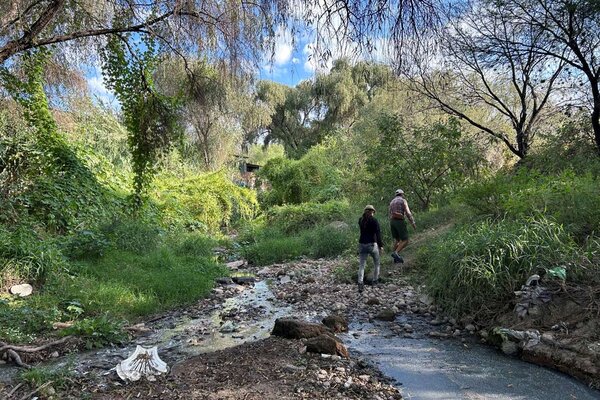
USask researchers develop eggshell ‘bioplastic’ pellet as sustainable alternative to plastic
USask-designed pellet is a “closed loop” system that absorbs key agricultural nutrient
By Kristen McEwen
What if there was plastic-like material that could absorb excess nutrients from water and be used as a fertilizer when it decomposes?
That product – a “bioplastic” material – has been created by University of Saskatchewan (USask) chemistry professor Dr. Lee Wilson (PhD'98) and his research team detailed in a paper recently published in the Royal Society of Chemistry Sustainability Journal. The research team includes PhD candidate Bernd G. K. Steiger, BSc student Nam Bui and postdoctoral fellow trainee Bolanle M. Babalola.
“We’ve made a bioplastic material that functions as an absorbent and it takes phosphate out of water, where elevated levels of phosphate in surface water is a huge global water security issue,” he said. “You can harvest those pellets and distribute them as an agricultural fertilizer.”
Wilson, a member of the Global Institute for Water Security (GIWS), and his research laboratory team, focus on developing forms of “bioplastic” – a material that looks like plastic but is made of biological materials (or biomaterials) that are designed to decompose.
Like plastic, bioplastics can be used in many ways, from packing materials such as bioplastic boxes or plastic bags designed for containing food.
600800jpg

This bioplastic material is a biocomposite pellet that contains a marine polysaccharide (chitosan), eggshells, and wheat straw. The pellet is its own “closed loop” material that absorbs phosphate from water sources and is then used as a fertilizer source for agricultural applications.
Phosphate is an essential nutrient commonly used in fertilizers for agriculture. As a key chemical in growing food around the world, an excess of phosphate in water sources can lead to increased growth of aquatic plants, such as blue green algae. Blue green algae can release toxins, which are harmful to humans and animals.
Phosphate is also a non-renewable resource and obtained through phosphate rock mining. Phosphate minerals have a limited supply can be depleted when it leaches from the ground to surrounding water sources.
This closed loop system is an alternative solution to mining phosphate and instead using the nutrient already present in water sources. It is also an alternative to products that use plastic coatings to deliver fertilizer to agricultural land, eventually becoming microplastic pollution.
Microplastics are an increasingly growing concern in the world – its long-term impact on humans, animals and the environment are not yet completely known.
“When these (plastics) break down in the environment, they will actually form microplastics,” he said. “Microplastics are one micron level and below in their physical size. They have plasticizers in them and other chemicals that can contaminate water.”
The chemicals that are added to make the plastic soft are what make the material toxic, Wilson explained. The more flexible, or soft, the plastic is, the more components have likely been added.
The plastic used for water bottles, pleather (plastic leather), or candy containers, are made of polypropylene, or polyethylene—strong materials with additive chemicals that can leach out of the product in landfills when water percolates through it, he explained.
600800jpg

“Within the last decade, as plastic breaks down into small particles, it can get into food, and penetrate into cells,” Wilson said. Microplastics can get into the ocean, into groundwater, into plants which are harvested and processed into food.
“If you placed a plastic margarine container into your backyard and bury it, it might be there for 50 years or more until it starts to crumble apart. But it’s those small particles that are harmful to human health.”
“With bioplastics, you can avoid all of that and you basically get something that breaks down into its original components or can be more readily composted or degraded through natural processes,” he added.
Wilson added that reducing synthetic materials and plastics in the environment would also make an impact. For example, if the plastic was made of 90 per cent bioplastic and 10 per cent synthetic, it would reduce the overall load in the environment and possibly allow the plastic to break down more readily.
“One of the issues with microplastics is there’s a lot of technology available to remove plastic from the ocean, but it’s the willingness and the political will (preventing it) but the science and technology is already there.”
Together, we will undertake the research the world needs. We invite you to join by supporting critical research at USask.


